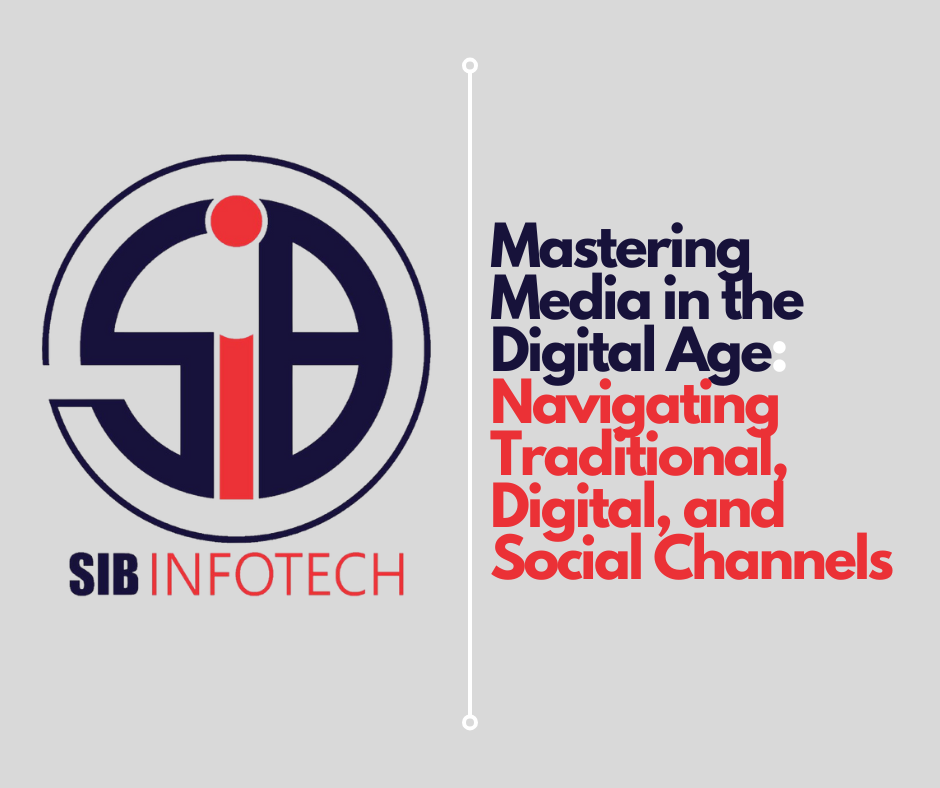Introduction
In an era defined by technological advancements, businesses are presented with diverse media options to reach their audiences. While traditional media has long been a staple, the emergence of digital and social media has created new avenues for engagement. At SIB Infotech, we believe that understanding these media types is crucial for developing effective marketing strategies.
Traditional Media: The Time-Tested Approach
Traditional media remains a powerful tool for businesses, particularly in specific demographics. Its established presence can instill trust and authority in a brand.
Pros:
- Audience Loyalty: Established brands often benefit from the loyalty of consumers who trust traditional media sources.
- Broad Demographic Reach: Traditional media can effectively reach audiences who may not engage with digital platforms.
Cons:
- One-Dimensional Communication: Traditional media typically offers a one-way communication channel, limiting interaction with consumers.
- High Production Costs: The costs associated with creating high-quality traditional media can be prohibitive for smaller businesses.
Digital Media: The Targeted Approach
Digital media encompasses a range of online platforms that enable businesses to reach specific audiences with tailored messaging.
Pros:
- Cost Efficiency: Digital marketing can be highly cost-effective, allowing businesses to allocate budgets more strategically.
- Data-Driven Insights: The ability to analyze consumer behavior in real-time empowers businesses to refine their strategies continuously.
Cons:
- Overcrowded Space: The digital landscape is competitive, making it essential for brands to find unique ways to stand out.
- Dependency on Technology: Technical issues can disrupt digital campaigns and hinder communication with audiences.
Social Media: Building Communities
Social media platforms have become essential for businesses looking to engage directly with their customers and foster a sense of community.
Pros:
- Real-Time Engagement: Social media allows for immediate interaction, enabling businesses to respond to customer inquiries promptly.
- Influencer Partnerships: Collaborating with influencers can amplify brand messaging and reach new audiences.
Cons:
- Maintaining Consistency: Building a strong social media presence requires regular content updates and engagement.
- Reputation Management: Negative comments or reviews can spread quickly on social media, necessitating swift responses from businesses.
Conclusion
In the battle for consumer attention, understanding the strengths and limitations of traditional, digital, and social media is crucial. At SIB Infotech, we are committed to helping businesses navigate this landscape effectively. By employing a multifaceted approach, you can enhance your online presence and foster meaningful connections with your audience.

